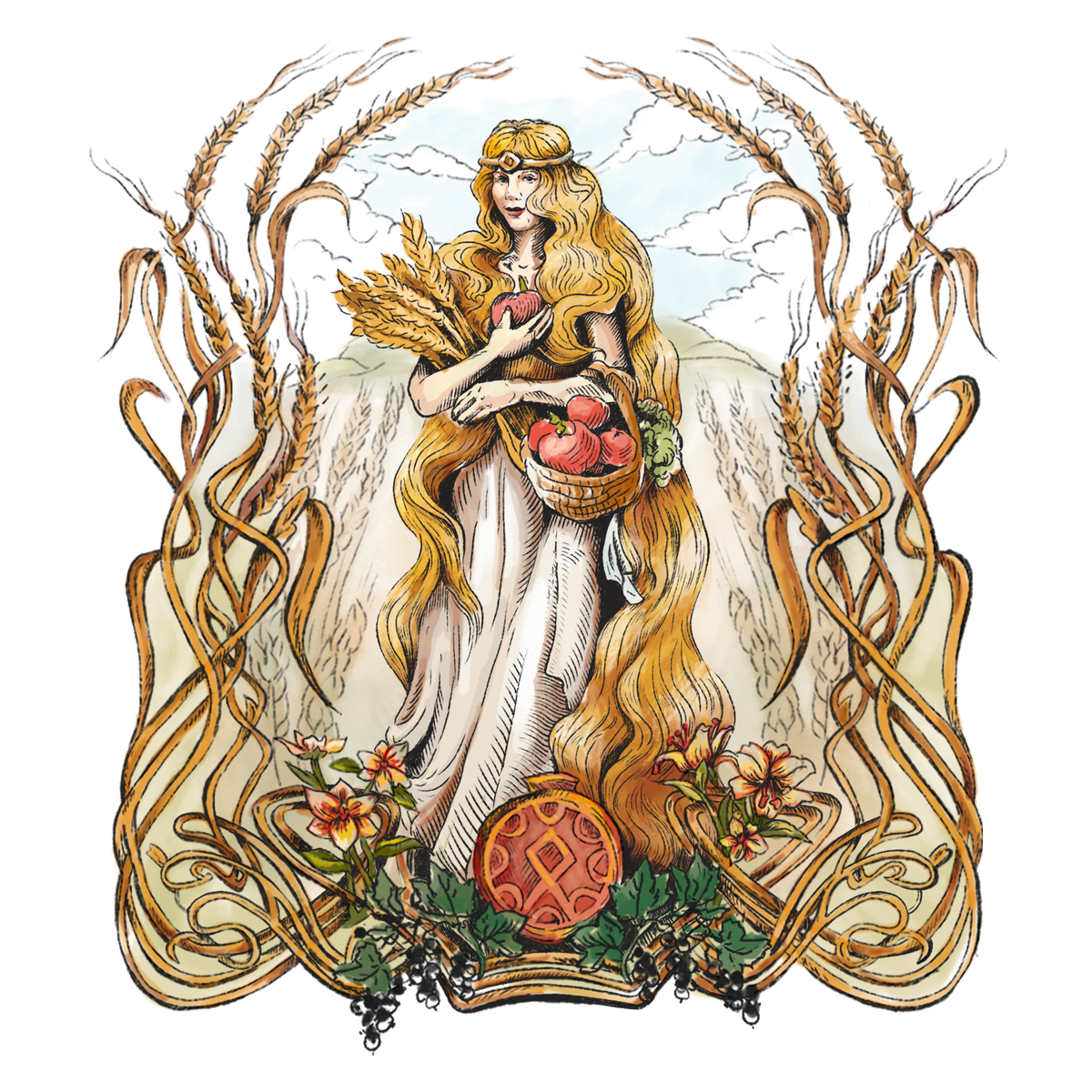
Sif – Goddess of kinship, fertility and marriage
Sif is one of the more enigmatic goddesses in Norse mythology, but her significance cannot be overlooked. She is known as the wife of Thor and is particularly famous for her golden hair, which symbolizes fertility, prosperity, and the importance of kinship. Although her role in mythology often stands in the shadow of more dominant gods such as Odin, Thor, and Freyja, she is a central figure in understanding family bonds and the social structure of the Norse world.
Sif’s Character and Symbolism
Sif is mentioned in several sources, primarily in The Poetic Edda and The Prose Edda, where her role is closely connected to Thor and her golden hair. Her name may derive from the Old Norse word sifjar, meaning "kinship" or "family ties," emphasizing her function as a goddess of lineage and unity.
In pre-Christian Norse society, marriage and kinship were of paramount importance. Marriages were often arranged to unite families, form alliances, and ensure the continuation of future generations. Sif can be seen as a divine representation of these values. Her golden hair is believed to symbolize fields of golden crops, linking her to fertility and agriculture—both crucial elements of Norse society.
Loki’s Trick and Sif’s Golden Hair
One of the most famous stories about Sif is found in Skáldskaparmál in The Prose Edda, where Loki, the cunning jötunn, decides one night to cut off all of Sif’s hair. When Thor discovers this, he becomes enraged and threatens Loki’s life. To save himself, Loki promises to acquire new hair for Sif, made of gold that will grow on her head like the original.
Loki seeks out the dwarves, the most skilled smiths in mythology, and convinces them to craft a new set of hair from pure gold. Along with Sif’s new hair, the dwarves also create the legendary artifacts Gungnir, Odin’s spear, and Skidbladnir, Freyr’s magical ship. This story highlights Sif’s importance in mythology—while she does not act directly, she becomes the catalyst for events that lead to the creation of some of the most significant objects in the gods’ world.
Sif as a Goddess of Fertility
Sif’s golden hair is often interpreted as a metaphor for fields of ripened grain. This aligns her with fertility goddesses and associates her with agriculture and the harvest. Her role is reminiscent of other fertility goddesses in European mythology, such as the Roman Ceres or the Greek Demeter.
In a pre-Christian Norse context, fertility was not only important for the land but also for families and society. Ensuring a good harvest and strong descendants was crucial for survival. Sif’s connection to fertility is also evident in her marriage to Thor, the thunder god, who was a protector of agriculture, as rain was essential for crops. Together, they form a divine pair—Thor ensures the protection of fields, while Sif guarantees their fertility.
Sif’s Children and Kinship
Sif is the mother of Ullr, a god closely associated with hunting and skiing. In The Poetic Edda, he is described as a mighty deity who is often invoked in battle. Although his father is not mentioned in the surviving sources, some scholars speculate that he may have been the son of a previous husband of Sif.
According to some mythological fragments, Thor and Sif also had a daughter, though her name has not been preserved in the surviving texts. She is believed to represent the continuation of kinship and family lineage. In this way, Sif serves as an important link between generations in the Norse pantheon.
Sif in Literary Sources
Sif is mentioned in several Norse mythological texts, but most often in connection with her hair or her marriage to Thor.
The Poetic Edda (Völuspá, Lokasenna): She is briefly mentioned in relation to Thor and Loki’s insults.
The Prose Edda (Skáldskaparmál): Describes the episode where Loki cuts off her hair and the creation of her new golden locks.
Heimskringla (Ynglinga Saga): Mentions her son Ullr as an important figure.
Although she does not have many independent myths, Sif remains an important figure in the Norse pantheon, especially as a symbol of kinship and fertility.
Sif’s Place in Modern Interpretations
In modern times, Sif has gained renewed attention through popular culture, especially in comics and films. In the Marvel universe, she is often depicted as a warrior, but this version deviates significantly from the ancient Norse texts.
In academic circles, Sif is often regarded as one of the less illuminated but still significant goddesses. Her role as a goddess of kinship highlights how vital family and unity were in Norse society. Her connection to harvests and fertility makes her a central figure for the agricultural communities of the time, where wealth and survival depended on the cycles of nature.
Conclusion
Although Sif may not have as many well-known stories as Freyja or Frigg, she is an indispensable part of Norse mythology. Her golden hair symbolizes both her beauty and the fertility she represents. Her role as Thor’s wife emphasizes her function as a central figure in Asgard’s social order, and her son Ullr connects her to a new generation of gods.
Her name, meaning kinship, is a reminder of how essential family and unity were in pre-Christian Norse culture. Sif is not just a passive figure but a goddess who represents some of the most important values in the Norse world: strength through community, prosperity through fertility, and beauty through nature’s cycles.

